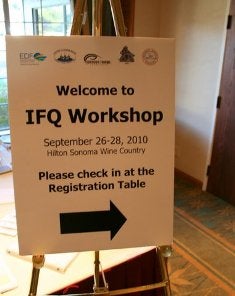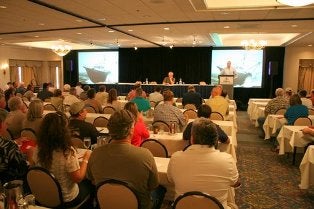More than 150 groundfish trawl fishermen and fishery experts from up and down the west coast have gathered in Santa Rosa, California today to learn how to structure their businesses under a new catch share program that will start Jan. 1st. Fishermen will hear from other fishermen who have made the transition to catch shares as well as government officials, fishery monitors, business and finance planners, and other fishery experts. The goal is to give fishermen the tools to thrive under the new system.
The workshop started this morning with introductory comments from Brian Mose, a trawl fisherman from British Columbia. Mose said that when his fishery – nearly identical to the U.S. groundfish fishery – moved to a catch share, fishermen had no help to figure out the new system. He described fishermen as “shell shocked.” But within a few months, fishermen began making changes, and today, the program is a success. Fishermen are making money and the fish stocks are stable or growing.
The new Pacific catch share was seven years in the making and should be a turning point for fishermen and the groundfish they harvest. Just ten years ago, the fishery was declared a disaster. Landings have plummeted 70 percent in the last two decades, and since 1998 revenues have dropped from $47.3 million to $22.2 million.
Under the new system, fishermen will not be in a rush to fish and deliver their catch. Instead, they will time their trips in accordance with both weather and market forecasts, maximizing their profits while fishing in a safer, more efficient, and sustainable way. The approved plan includes precedent-setting provisions aimed at protecting coastal communities and the environment. There are several features in the plan that makes it stand out as a model for sustainable and adaptive fisheries management. The Council and NOAA have seen to it that fishermen and coastal communities have a real say in how they adopt new practices and adapt to the catch share system.
Stay tuned for more updates from the workshop throughout the week.











